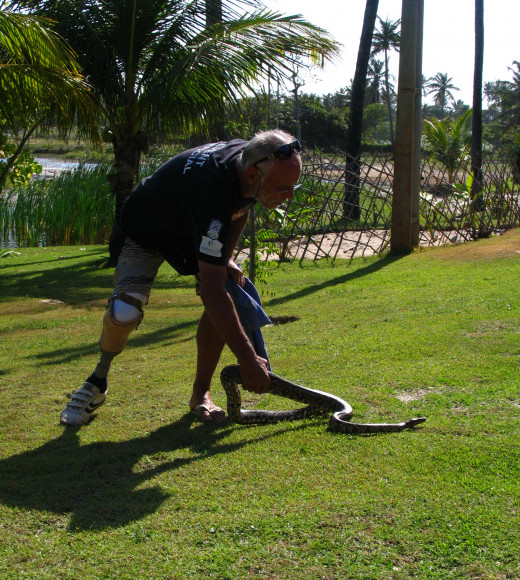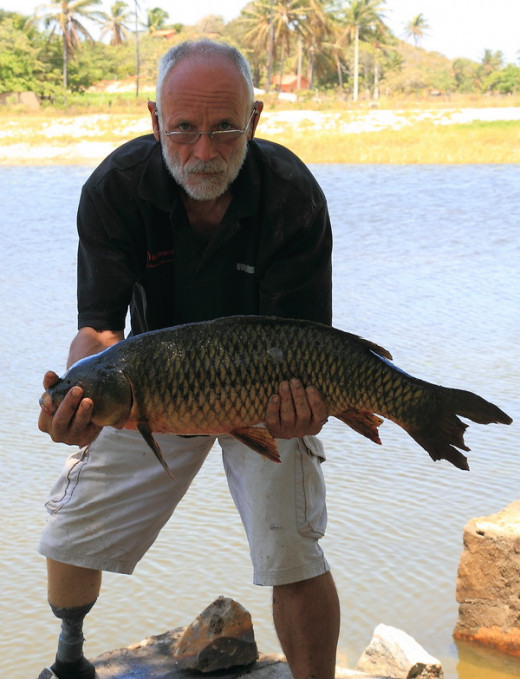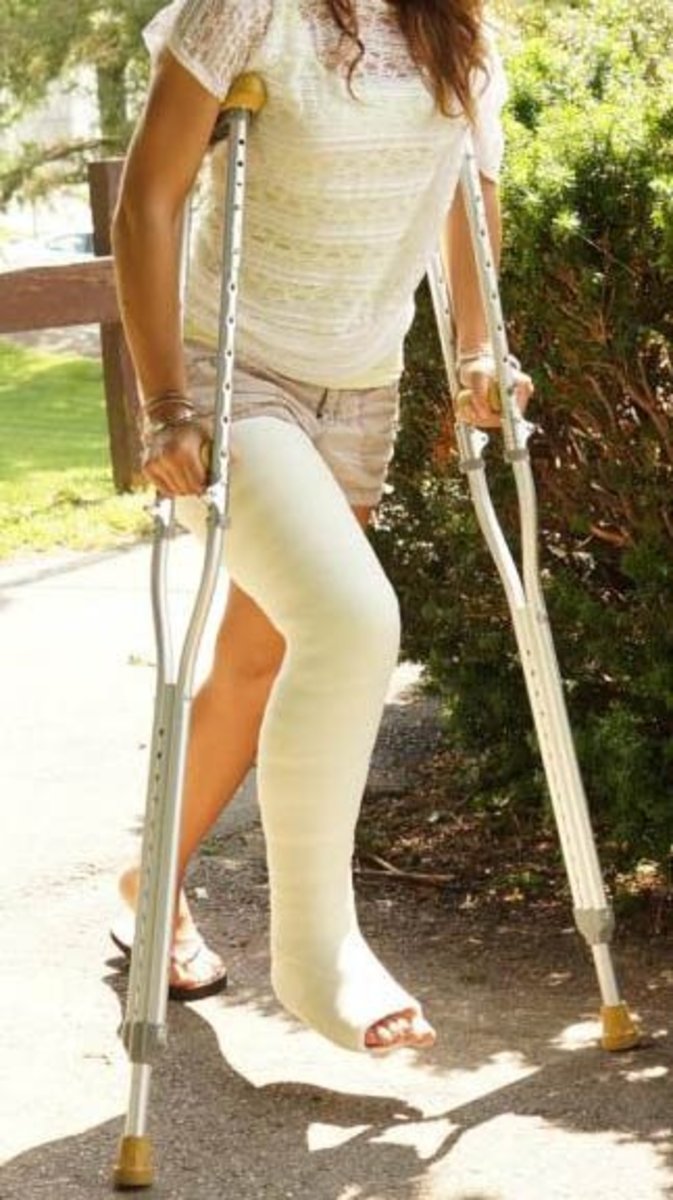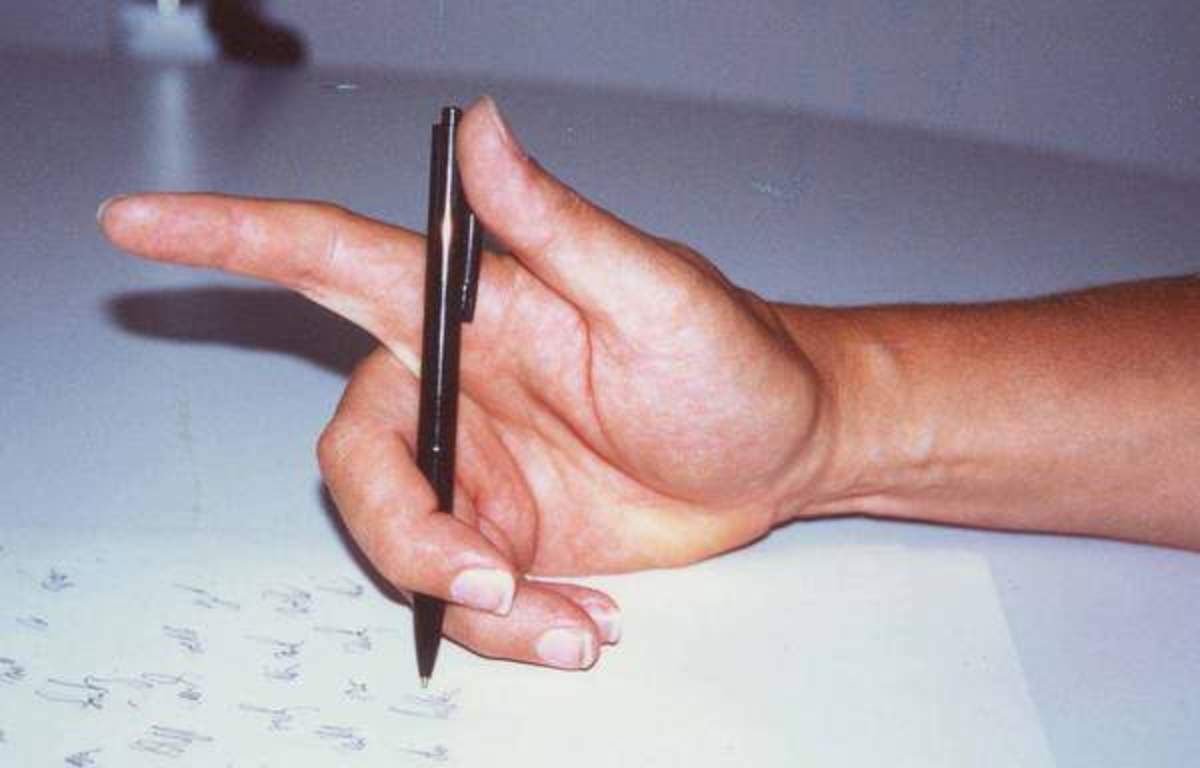Life With an Artificial Leg

Life as an Amputee
Imagine waking every day and having to strap on an artificial leg before getting out of bed. This is what my husband does. Without the prosthetic he is handicapped, disabled, and a cripple. These are his words, not mine. The necessity of wearing a comfortable well fitting prosthetic leg is crucial to maintaining an active healthy lifestyle.
Once my husband puts on his artificial leg, he is normal again. If fact, when he is wearing long trousers, those that don't know he has an prosthetic, wouldn't guess he has one, as he walks incredibly well and always out paces me.
What Caused the Amputation
My husband has lived an active life. He has been a diver off the North Sea oil platforms, a stunt-man, and a cameraman which has taken him to some of the most remote places on the planet. He damaged his leg jumping from a gate, something he had done a dozen times. This time however, it was different. He landed incorrectly and the full weight of his body came crashing down onto his leg, resulting in a compound fracture. The surgery wasn't a success and he was left with an open wound that wouldn't heal. He was prescribed antibiotics and had the dressings changed daily. The wound still wouldn't heal. Finally he tried manuka honey on the wound. It closed the open sore but by this time, osteomyelitis (bone rot) had set in and there was nothing that could be done other than amputation. That said, the doctors wanted him to wait 2 years! Any time my husband moved he was in pain. He pressed the doctors to bring the surgery forward and in December of 2004 the leg was amputated.

Living with Phantom Pain
The sensation that you still have a part of your body after it has been surgically removed, is called phantom pain. For my husband, following the surgery, he had the sensation that his toes were cramping although they were no longer there. This is a big problem for some amputees which can affect their quality of life.
Before my husband's amputation, I bought him the book by Dr Ramachandran. He is a neurologist living in California and has led groundbreaking research into how the brain reacts to stimuli. The books and videos he writes don't just deal with problems for amputees but also for people who have problems assimilating information correctly. This could be due to a stroke or other problems which affect the brain. I believe after reading the book, my husband was prepared for what might happen but didn't worry about it.
Now, several years on, he still has the occasional twinge but by and large, the phantom pain has subsided.

Preparing a Prosthetic for the Tropics
Living in the tropics with a prosthetic has caused unforeseen problems for various reasons. The sand has eaten away rubber parts and has increased the deterioration rate of the silicone socks.
Walking in deep sand is a problem because the heel drops down at an uncomfortable angle causing the front of the socket to cut in under the knee.
My husband now opts to wear working boots to keep the elements off the artificial foot. He also wears long trousers to ensure the socket isn't damaged due to salt, humidity, or the sun. He has taped around the foot with duct tape to seal it as well.
Because of where we live, we order items off the internet that are needed for his prosthetic leg. If suppliers don't ship to Brazil, these are then brought to us by friends traveling from Europe or America.
Recently, after three years in the tropics, the rubber covering foot had completely disintegrated. This part is needed to ensure a shoe fits correctly over the metal foot plate. My husband contacted the company who has its headquarters in the US. Because they don't have a representative in this country they sent the parts to my husband. He showed them, through photographs, which parts were damaged and that he was capable of reconstructing the foot with the new parts.
Because of the ongoing problems with his leg and prosthetic, we have decided to sell our farm. My husband is now 63 years old and feels 8 acres is too much work for him. There is a link below to details about the property.
Driving with a Prosthetic
Driving a car with a prosthetic leg was initially difficult. No ankle movement meant that lifting the foot off the accelerator involved moving the whole leg. In the UK my husband had the pedals swapped so that everything could be done with his left foot. Now, in Brazil we have two vehicles, a VW Kombi which he finds easy to drive. Our beach buggy needed a bit of modification which was just to make extra space for his right foot to rest.
Attitudes Towards Disabilities
The way some people react towards others with a disability boggles my mind. As I mentioned before, some people don't know my husband wears a prosthetic. We have walked to the front of lines and been accosted by people in the back of the line telling us not to cut in front of them. My husband then pulls up his trouser leg showing them the prosthetic and usually says, "do you want me to have the other one cut off as well?" This of course is met with a lot of averted eyes and lowered heads.
Once when we were camping, and my husband was wearing shorts, a little boy, about 8 years old, was fascinated by the artificial leg. He had no shame in looking at it, asking questions, wondering how it was all connected. He was crawling on the ground wondering how a metal pole was connected into a shoe. He asked if my husband would feel pain if he stamped on it. My husband responded, "No, it wouldn't hurt". The young boy thought my husband was 'RoboCop'.
How do you react to someone with an artificial limb?
Do you feel uneasy seeing someone with a prosthetic?
As with anything in life, a person can decide how they will deal a problem. You either get on with it or you let it become a problem. Whether a person becomes an amputee through an accident, illness, or was born without limbs it will be down to that person to decide what they can and can't do.
This content is accurate and true to the best of the author’s knowledge and is not meant to substitute for formal and individualized advice from a qualified professional.
© 2012 Mary Wickison








